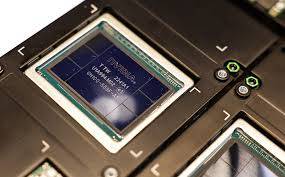The AI boom is facing a roadblock: strained tech supply chains, causing a chip shortage. Demand for AI hardware is through the roof (just look at Nvidia’s share price), but manufacturers are struggling to keep up. It’s a real-life Hunger Games for chips, and whoever gets their hands on the last GPU might just be the next tech titan. Chip manufacturers, operating at 90% capacity, struggle to meet the soaring demand, creating real-life competition for GPUs. This scarcity limits access to essential hardware for businesses and researchers developing next-gen AI tools. Despite a 36.8% CAGR, reaching $1.3 trillion by 2030 (as per MarketsandMarkets analysis), addressing the supply chain constraint is crucial for fulfilling AI’s potential in 2024. Watch out for more stock swings and announcements from chip manufacturers as they close the gap with Nvidia and users like Car and Cloud service providers venture into chip manufacturing as it becomes core to the business.
Introduction
• Define the concept of AI bottleneck in relation to the demand for advanced processing capabilities.
• Importance of AI chips in powering artificial intelligence applications.
1. Evolution of AI Hardware
• Early developments in AI hardware:
• Introduction of GPUs for parallel processing.
• Emergence of specialized AI accelerators (e.g., TPUs, FPGAs).
2. Current Landscape of AI Chips
• Overview of leading AI chip manufacturers:
• Companies like NVIDIA, Intel, AMD, and emerging players.
• Role of startups and research institutions in innovation.
3. Technological Advancements
• Deep Learning and Neural Network Acceleration:
• Hardware architectures optimized for AI tasks.
• Impact of AI-specific designs on performance and efficiency.
4. The Global Chip Wars
• Competitive dynamics among major players:
• Investments in R&D and acquisitions.
• Strategic partnerships and alliances in the semiconductor industry.
5. Challenges and Bottlenecks
• Supply chain constraints and semiconductor shortages:
• Effects of global events (e.g., COVID-19 pandemic) on chip production.
• Impact on AI research, development, and deployment timelines.
6. Future Trends and Innovations
• Shift towards edge computing and IoT:
• Demand for low-power AI chips in decentralized computing environments.
• Integration of AI with smart devices and autonomous systems.
7. Regulatory and Ethical Considerations
• International regulations on semiconductor exports and technology transfer:
• Implications for AI chip development and global supply chains.
• Ethical concerns related to AI-powered technologies and military applications.
8. Conclusion
• Summary of the competitive landscape and challenges in the AI chip industry.
• Outlook on future innovations and collaborative efforts to overcome bottlenecks.


